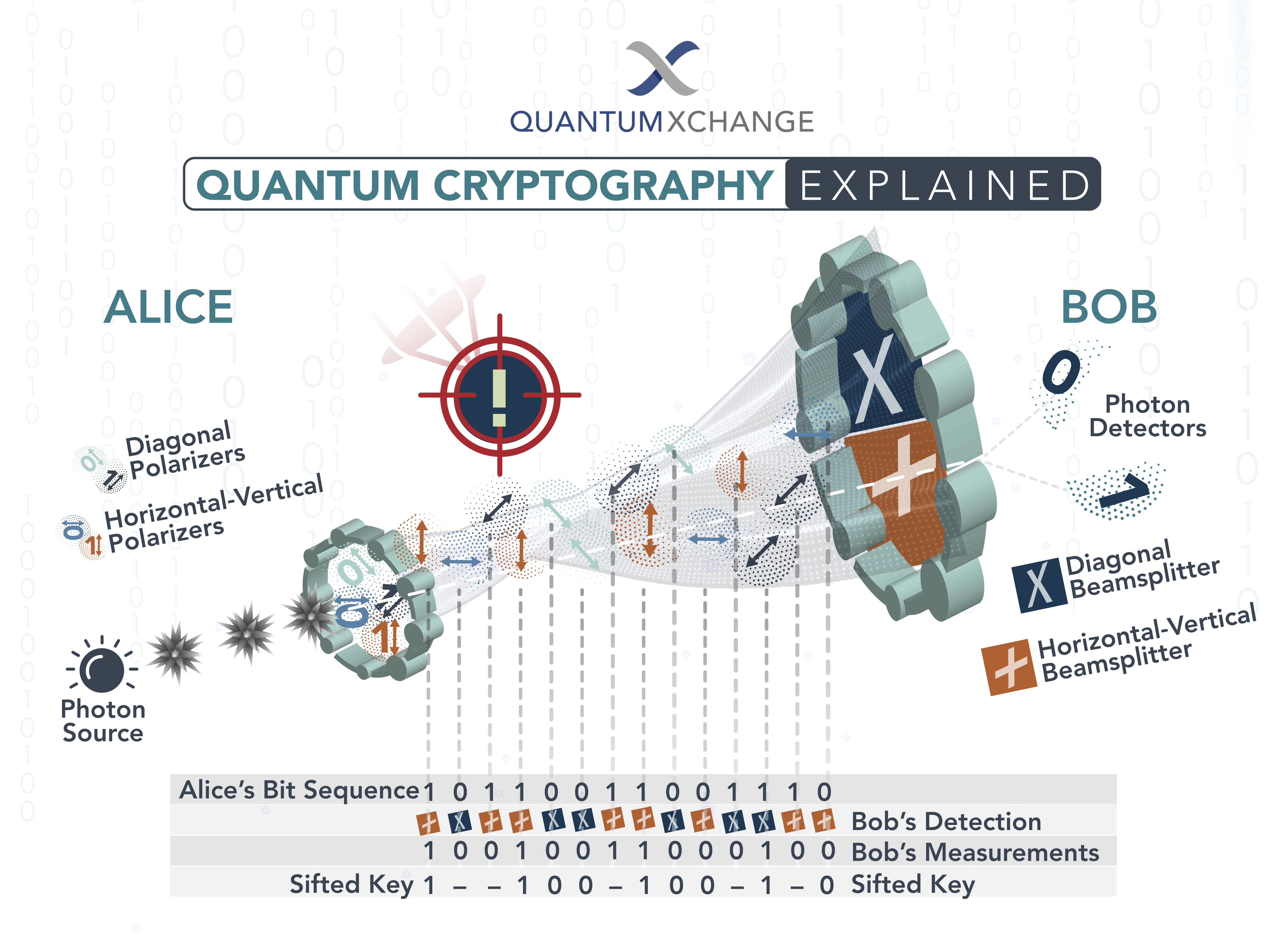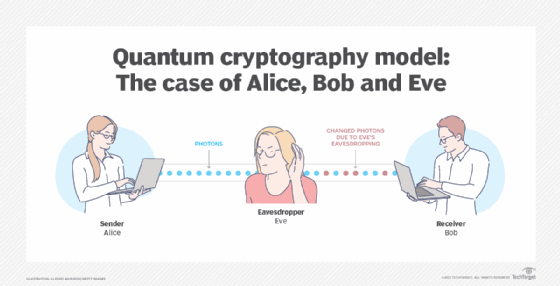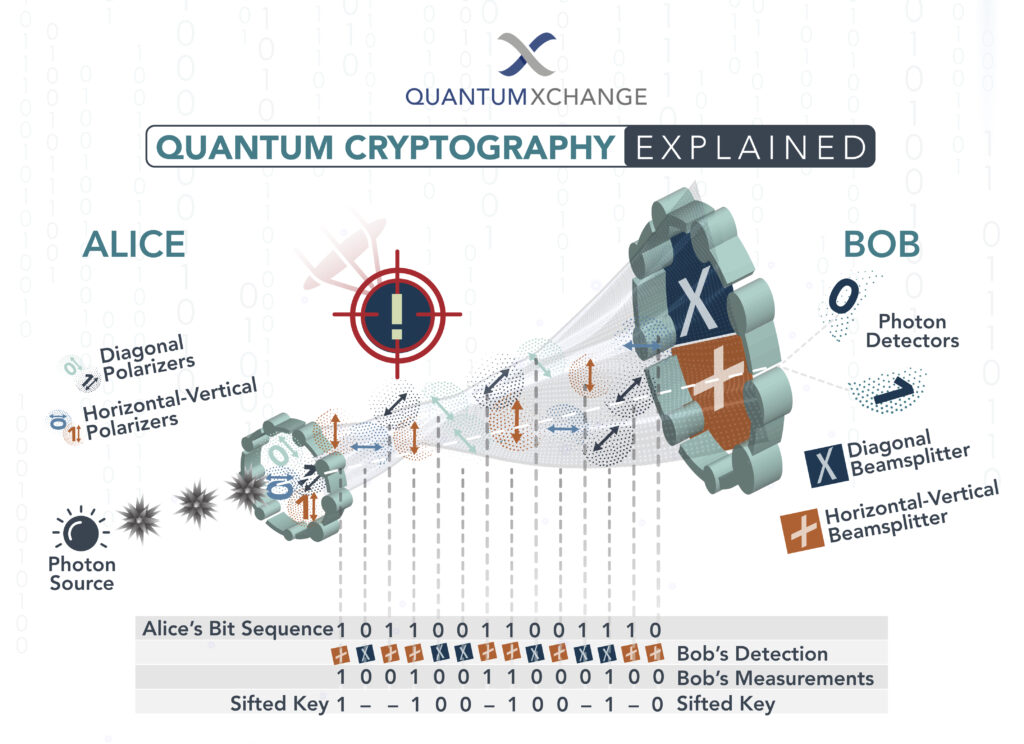Quantum cryptography, also known as quantum-encrypted communication or quantum key distribution, is a cutting-edge technology that uses the principles of quantum mechanics to ensure secure communication between two parties. Unlike classical cryptography, which relies on mathematical algorithms to protect information, quantum cryptography uses the laws of physics to create unbreakable codes.
At its core, quantum cryptography is based on the fact that measuring a quantum system changes its state, meaning that any attempt to intercept or eavesdrop on a quantum-encrypted message will inevitably disrupt it. This allows the sender and receiver to detect any attempt of interference and instantly abort the communication, ensuring that the message remains secure. In this way, quantum cryptography offers an unprecedented level of security that is resistant to all known attacks, including those that could break traditional cryptographic methods.
Quantum cryptography is a method of secure communication that makes use of quantum mechanical properties to encrypt data. It is based on the principle that any measurement of a quantum system will alter its state, and is thus immune to interception and tampering. The technology is capable of providing secure communication between two parties even in the presence of an eavesdropper, allowing for the safe and secure transfer of sensitive data.

What is quantum cryptography?
Quantum cryptography is a new form of cryptography which uses the principles of quantum mechanics to secure communication. It is based on the phenomenon of quantum entanglement, which allows two particles to be connected in such a way that one particle will affect the other, even when the two particles are separated by a large distance. This phenomenon is used to create an unbreakable form of encryption which is impossible to intercept or decrypt.
Quantum cryptography is a rapidly growing field of research, as it is seen as one of the most secure methods of communication available. It is being used in a variety of ways, from secure communication networks to secure banking transactions.
How does quantum cryptography work?
Quantum cryptography uses the principles of quantum mechanics to create a secure communication channel between two parties. The first step in this process is to generate a pair of entangled photons, also known as a quantum key. Each of these photons has an individual spin, which is used to generate a random key. This key is then used to encrypt the data which is sent over the secure channel.
Once the data has been encrypted, it is sent over the quantum channel. This quantum channel is secure and cannot be intercepted or decrypted, as any attempt to do so will cause the photons to become entangled again, destroying the key. This makes quantum cryptography one of the most secure forms of communication available.
What are the advantages of quantum cryptography?
Quantum cryptography has several advantages over traditional cryptography. The first is that it is extremely secure, as the encryption key is completely random and cannot be intercepted or decrypted. Additionally, quantum cryptography is extremely fast, as the data can be sent over the secure channel almost immediately. Finally, quantum cryptography is also very energy efficient, as the process requires minimal energy to operate.
Another advantage of quantum cryptography is that it is impossible to clone the encryption key, as any attempt to do so will destroy the key. This means that the data is always secure, even if someone is able to intercept the data. Finally, quantum cryptography is also incredibly secure against attacks such as man-in-the-middle attacks, as the encryption key is constantly changing and cannot be cloned.
What are the applications of quantum cryptography?
Quantum cryptography is being used in a variety of applications, from secure communication networks to secure banking transactions. It is also being used to protect sensitive data in areas such as the military, healthcare, and government. Additionally, quantum cryptography is being used to protect data stored on the cloud, ensuring that the data is secure even if the cloud service is compromised.
Finally, quantum cryptography is also being used by companies to protect their intellectual property, as the encryption key is impossible to clone or intercept. This ensures that the company’s proprietary information is secure, even in the face of sophisticated attacks.
Frequently Asked Questions
Quantum cryptography is a method of secure communication utilizing the principles of quantum mechanics. It is a promising technology that can be used to ensure secure communication between two parties, even in the presence of a malicious third-party.
What is quantum cryptography?
Quantum cryptography is a form of cryptography based on the principles of quantum mechanics. It is a secure communication technique that utilizes the properties of quantum mechanics in order to ensure secure communication between two parties, even in the presence of a malicious third-party. Quantum cryptography makes use of the Heisenberg uncertainty principle to ensure the security of the communication by preventing any eavesdropping. The uncertainty principle states that it is impossible to measure the exact state of a quantum particle, thus making it impossible to intercept or modify the data without detection.
How does quantum cryptography work?
Quantum cryptography works by encoding the data in a single quantum particle (such as a photon). The sender and receiver then share a secret key, which is used to encrypt and decrypt the data. The key is generated using a process called quantum key distribution (QKD), which uses the principles of quantum mechanics to generate a secure key that cannot be eavesdropped on or intercepted. Once the key has been generated, it is used to encrypt and decrypt the data as it is transmitted between the two parties.
What are the benefits of quantum cryptography?
The primary benefit of quantum cryptography is its ability to provide secure communication even in the presence of a malicious third-party. This is because the Heisenberg uncertainty principle prevents any eavesdropping or interception of the data. Furthermore, quantum cryptography also does not require any prior agreement or trust between the two parties, as the key is generated using the principles of quantum mechanics.
What are the limitations of quantum cryptography?
The main limitation of quantum cryptography is that it requires specialized hardware and software in order to be implemented. This can be costly, and may not be feasible for some organizations. Additionally, quantum cryptography is also limited in terms of its range, as the data must be transmitted over a direct line-of-sight between the two parties in order for the key to be securely generated.
What is the future of quantum cryptography?
The future of quantum cryptography is very promising. As technology advances, it is likely that the cost of implementing quantum cryptography will become more affordable and the range of its applications will expand. Additionally, quantum computing is expected to revolutionize cryptography and make it even more secure. With its ability to provide secure communication even in the presence of a malicious third-party, quantum cryptography is a promising technology that has the potential to revolutionize the way data is transmitted and stored.

What is Quantum Cryptography? An Introduction
In conclusion, quantum cryptography is a cutting-edge technology that utilizes the principles of quantum mechanics to ensure secure communication. By utilizing the properties of quantum particles, such as entanglement and superposition, quantum cryptography provides an unbreakable method of encryption that is impervious to hacking attempts. With the increasing prevalence of cyber attacks, quantum cryptography is becoming an increasingly crucial tool for governments, businesses, and individuals to protect their sensitive information.
As the field of quantum computing continues to evolve, quantum cryptography will play an increasingly important role in the realm of cybersecurity. With the ability to protect against even the most sophisticated hacking attempts, quantum cryptography represents a major leap forward in the field of information security. As researchers continue to explore the possibilities of quantum cryptography, it is clear that this technology has the potential to revolutionize the way we approach cybersecurity in the years to come.

